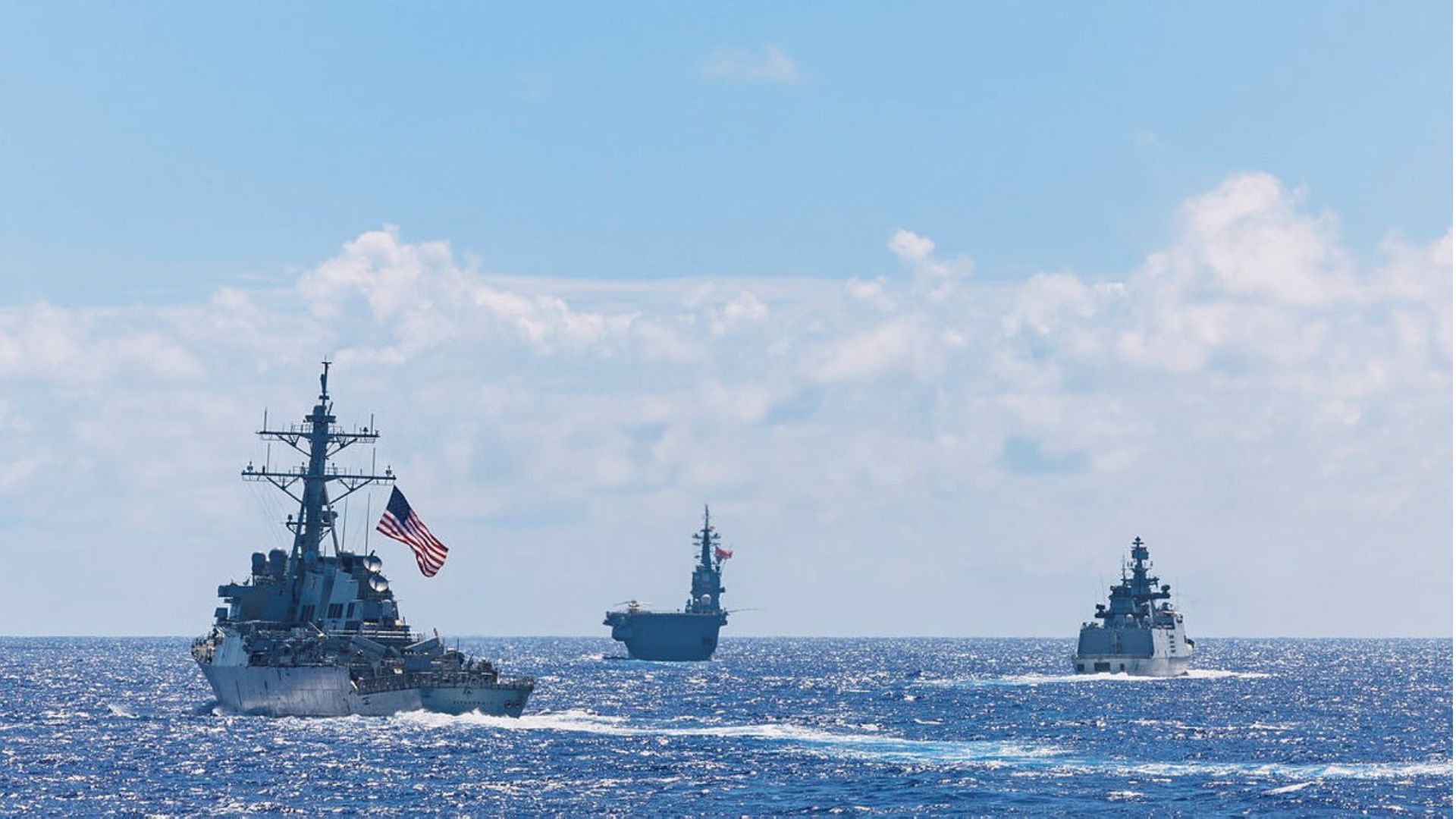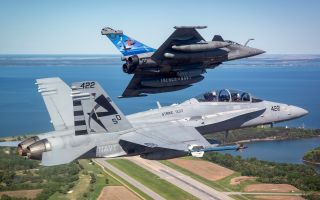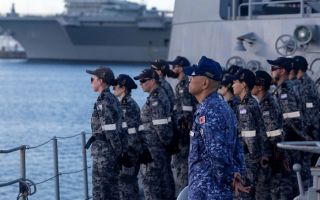Ex Malabar: Quad nations project power and promote a free and open Indo-Pacific
With world leaders' attention shifting to the growing threats posed in the Indo-Pacific, four nations have carried out a joint exercise to strengthen cooperation and safeguard a free and open maritime order.
Exercise Malabar, which involved naval and air assets from the United States, Australia, India and Japan, encompassed a range of activities including anti-submarine warfare, counter-piracy operations and anti-air warfare drills.
Beyond testing their interoperability, the annual exercise provides a counterweight to China's growing influence in this increasingly strategic region.

The Quad
Ex Malabar began in 1992 as a relatively modest bilateral drill between the navies of India and the US.
It involved basic manoeuvres, passing exercises and search and rescue drills aimed at strengthening their maritime relationship.
The exercise was suspended in 1998 after several countries and international bodies imposed sanctions on India in response to the Pokhran-II nuclear tests - a series of five nuclear detonations - but it resumed in 2002.
In 2007, the Quadrilateral Security Dialogue - informally known as the Quad - was formed, made up of the US, India, Australia and Japan. Ex Malabar was conducted in the same year, this being the first participation of the latter two nations.
By 2008, the Quad was disbanded following then-Australian prime minister Kevin Rudd's withdrawal from the group in an effort to improve relations with China.
After nearly a decade-long hiatus, amid shared concerns over China's economic and military influence in the region, it was resurrected in 2017 with an aim to support a "free, open and inclusive Indo-Pacific".
For this year's exercise, Royal Australian Navy Anzac-class frigate HMAS Ballarat was joined by Indian stealth frigate INS Sahyadri, Japanese helicopter destroyer JS Hyuga and the US Aegis guided-missile destroyer USS Fitzgerald.

At present, power rivalries in the region have become increasingly fierce, with the US treating the Indo-Pacific as a theatre for competition with China.
With a rapid expansion of advanced platforms and weapon systems, including space warfare capabilities, and an arsenal of nuclear warheads expected to double to 1,000 by 2030, China presents a persistent challenge for both the US and the UK.
This challenge has been compounded by China's investment in shipbuilding over the past two decades, which is outpacing any other country.
This commanding lead applies to its navy, the People's Liberation Army Navy, the naval warfare branch of the Chinese Communist Party - which now boasts the largest fleet in the world.
UK's involvement in regional stability
In what was seen as a response to China's influence, a trilateral security partnership between Australia, the UK and the US – known as Aukus - was formed in 2021.
Aligned with the Quad's vision of a free and open Indo-Pacific, the agreement – worth £176bn over 30 years – involved two so-called pillars.
Pillar one involves the supply and delivery of nuclear-powered attack submarines to Australia.
Australia is set to acquire three second-hand Virginia-class submarines from the US in early 2030, with the option to add two more to its fleet.
Though the benefits of the deal for the US are unclear, it underscores US president Donald Trump's peace through strength approach, and can in some ways grow his nation's presence in the region.
The plan is then to design a new nuclear-powered submarine model for both the UK and Australian navies under a 50-year-long deal called the Geelong Treaty.
The SNN-Aukus will be the largest, most advanced and most powerful submarine ever operated by the Royal Navy.
It is set to enter UK service in the 2030s, replacing the Astute-class submarines, and will join the Royal Australian Navy in the 2040s, succeeding the Collins-class.
From 2027, the pact will allow a small contingent of US and UK nuclear submarines to be based in Perth in Western Australia, helping to bolster regional stability.
Pillar two involves the allies collaborating on their advanced capabilities like AI, cyberwarfare and long-range hypersonic missiles.
While China was never mentioned in the announcement of the pact, it is widely considered to be a response to Beijing's growing influence and the threat it poses in the Indo-Pacific.









